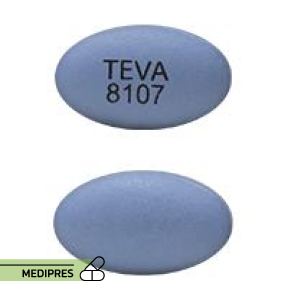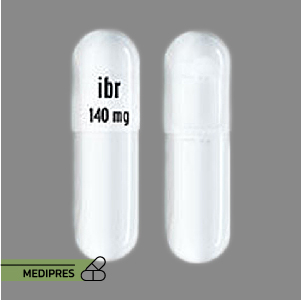
Hyzaar
23 June, 2023
Ibutilide
23 June, 2023Ibuprofen and famotidine
Generic name:
Ibuprofen and famotidine
Drug class:
Nonsteroidal anti-inflammatory drug (NSAID) and H₂-receptor antagonist
Dosage form:
Oral tablets (film-coated)
Root of administration:
Oral
Dose:
- Ibuprofen: 200–800 mg every 6–8 hours as needed (maximum 3200 mg/day)
- Famotidine: 20 mg twice daily (maximum 40 mg/day)
- Combination tablet: typically 1 tablet (e.g., ibuprofen 800 mg/famotidine 26.6 mg) twice daily
- Adjust dose in hepatic or renal impairment; varies by indication; consult label
Mechanism of action:
Ibuprofen reversibly inhibits cyclooxygenase (COX-1 and COX-2), reducing prostaglandin synthesis to decrease inflammation, pain, and fever. Famotidine competitively blocks H₂ receptors on gastric parietal cells, reducing basal and stimulated gastric acid secretion and providing gastroprotection.
Drug usage cases:
- Osteoarthritis
- Rheumatoid arthritis
- Acute musculoskeletal pain
- Dysmenorrhea
- Dental pain
- Fever management
- Gout flares
- Peptic ulcer disease prophylaxis in NSAID users
- Off-label: migraine, tension headache, back pain
Drug contra indications:
- Hypersensitivity to ibuprofen, famotidine, aspirin, or other NSAIDs
- History of NSAID-induced asthma, urticaria, or allergic reactions
- Active gastrointestinal bleeding or peptic ulcer
- Severe hepatic impairment
- Severe renal impairment (CrCl < 30 mL/min)
- Congestive heart failure (NYHA class III/IV)
- Pregnancy in the third trimester
- Children under approved age (varies by formulation)
Side effects:
- Gastrointestinal: dyspepsia, nausea, abdominal pain, constipation, diarrhea, GI bleeding, peptic ulceration
- Cardiovascular: hypertension, edema, increased risk of myocardial infarction and stroke (with chronic use)
- Renal: acute renal failure, fluid retention, hyperkalemia
- Central nervous system: headache, dizziness, somnolence, aseptic meningitis
- Dermatologic: rash, pruritus, photosensitivity, Stevens-Johnson syndrome, toxic epidermal necrolysis
- Hepatic: elevated liver enzymes, hepatitis
- Hematologic: anemia, thrombocytopenia, leukopenia, prolonged bleeding time
- Allergic: anaphylaxis, angioedema
- Famotidine-specific: constipation, diarrhea, headache, dry mouth, confusion (elderly)
Warnings:
- Risk of serious GI adverse events including bleeding, ulceration, perforation; monitor for signs of GI toxicity
- Cardiovascular risk: may increase risk of fatal MI and stroke; use lowest effective dose for shortest duration
- Renal toxicity: monitor renal function, especially in volume-depleted patients
- Hypersensitivity reactions: can occur without prior exposure; discontinue if rash or allergic reactions develop
- Use with caution in patients with cardiovascular disease, hypertension, or risk factors for these conditions
- Avoid concomitant NSAIDs, corticosteroids, anticoagulants, SSRIs, or other ulcerogenic drugs unless necessary
- Famotidine: use with caution in severe renal impairment; adjust dose accordingly
- Masking of symptoms: may obscure fever or inflammation that would indicate a developing infection
Use during pregnancy or breastfeeding:
Pregnancy: Ibuprofen crosses the placenta and is generally contraindicated in the third trimester due to risk of premature closure of the fetal ductus arteriosus and oligohydramnios; use only if clearly needed and avoid late pregnancy. Famotidine is Category B; animal studies show no harm but adequate human studies are lacking.
Breastfeeding: Ibuprofen is excreted in breast milk in low amounts and is generally considered compatible with breastfeeding at recommended doses. Famotidine is also excreted in breast milk in low concentrations; monitor infant for adverse effects. Consider minimizing dose and duration.



